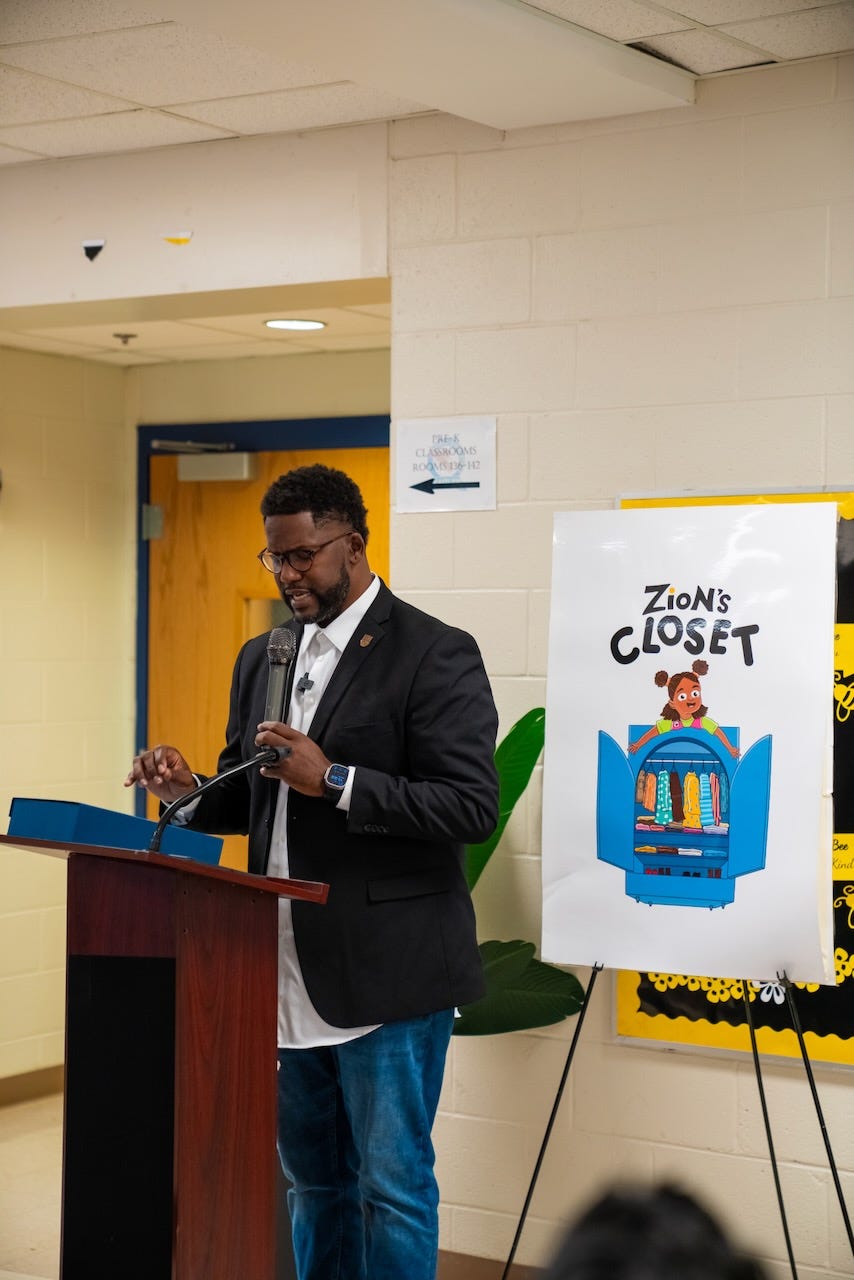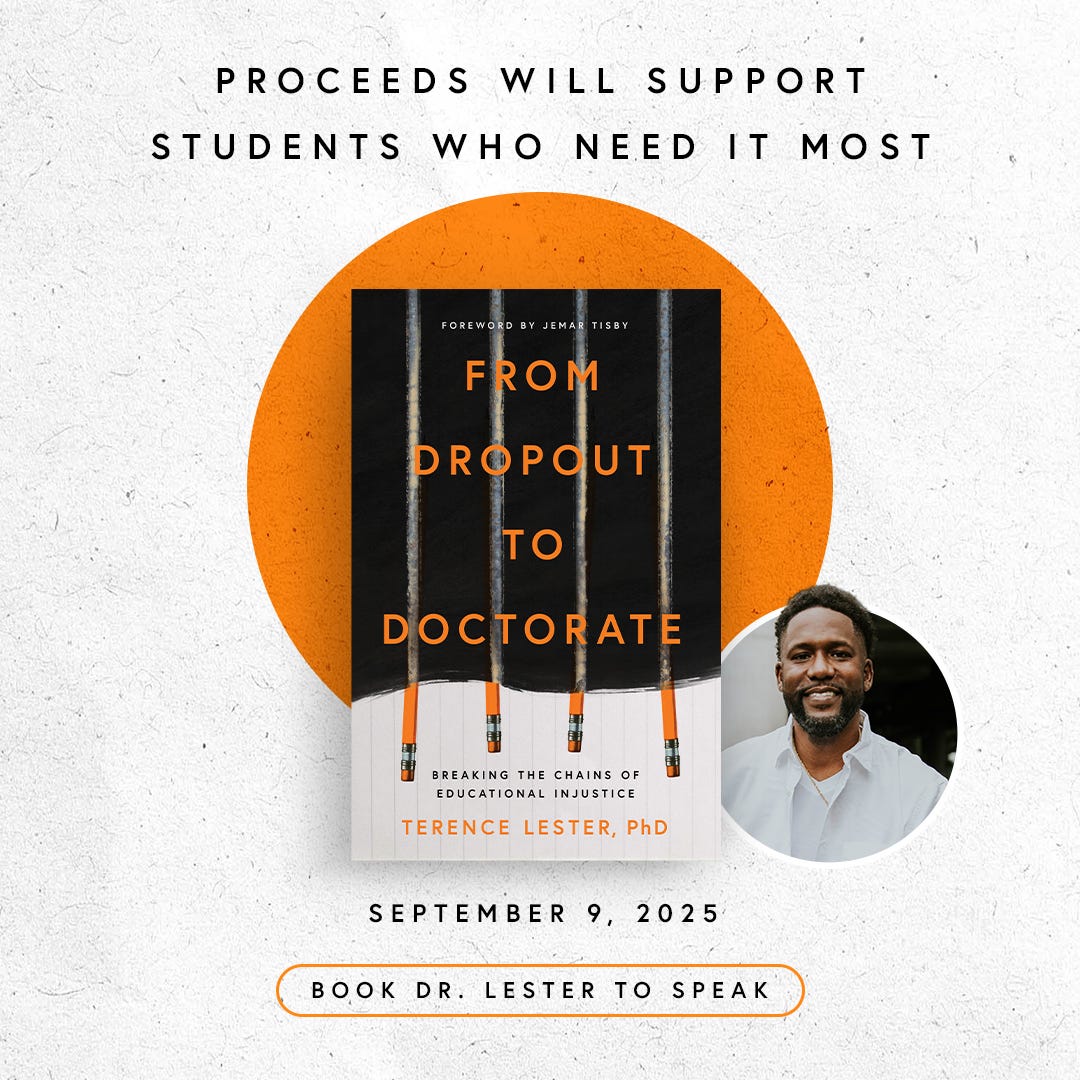This is my first time writing in a while. To be honest, I’ve been at a loss for words with everything happening in our world. But that doesn’t mean I’ve stopped the work. I’ve simply been focused on practical ways to make an impact—showing up, building, and responding to needs in real time. And in the middle of that, I found a way.
A few months ago, I was standing in a hallway at Finch Elementary School in Atlanta. We had just launched our first retrofitted classroom designed for students and families experiencing homelessness. We partnered with Larry Nance Jr. from the Atlanta Hawks to do this work. The space was vibrant—freshly painted walls, a colorful mural, stocked shelves, a washer and dryer, uniforms, backpacks, even a refrigerator. It looked like hope.
As I talked with one of the educators, she shared something that stopped me: funding was being slashed for student support in the coming year. “We’re going to have more kids in need and fewer resources to help,” she said.
Just then, I saw a young student being quietly escorted into the closet. His shirt was stained. His shoes were falling apart. A few minutes later, he walked out wearing clean clothes and sneakers that actually fit. He smiled.
That moment broke something open in me. It wasn’t just about the closet. It was about what it means when a child can finally show up to class with dignity.
Since that day, we’ve been building another resource closet over the summer—this time at Liberty Point Elementary School in Fulton County. The principal there shared similar struggles: students arriving hungry, and teachers, social workers, and counselors overwhelmed. The need isn’t shrinking—it’s spreading.
We call these spaces Zion’s Closet.
Zion’s Closet is a school-based resource center built directly inside elementary Title 1 schools. Each space provides uniforms and clothing, hygiene essentials, a computer lab where parents can fill out job applications, school supplies, laundry machines, and food. More than that, each closet becomes a safe space—where students and families facing poverty or housing instability can access what they need with dignity. These closets reduce stress for families and lighten the load on educators working to support students beyond the classroom.
But they’re more than just closets. They are lifelines. They are safe places where kids can get what they need without shame, judgment, or having to leave the school campus.
According to Kids Count Data, 18 percent of school-aged children in Georgia live below the federal poverty line—impacting their academic engagement, development, and overall experience in school.1
And yet, the deeper we go, the more we realize this isn’t just about a few schools. It’s a national crisis. After-school programs are disappearing. Budgets are getting reduced. Families are stretching every dollar to make it to the next week. And students—the ones who should be dreaming, building, learning—are struggling just to stay afloat.

A friend of mine, a dedicated theatre teacher, recently shared that he lost his job due to sudden funding cuts. He had built his program from scratch and had become a trusted, familiar presence for students across multiple schools.
Then, without warning, his contract was canceled—no explanation to students, no transition. “What really sucks,” he said, “is the kids won’t have any idea what happened to their teacher or the drama program. I just disappear.”
It’s not just K–12 schools. Layoffs are happening in higher education too. Colleges and universities are making cuts across departments, eliminating support programs, and raising costs. This only widens the gap—making it harder for the students struggling in elementary school today to even imagine college as a future possibility.
When you remove supports at every level, you don’t just impact a student’s present—you dim their vision of what’s possible tomorrow.
I know what that feels like. I remember my mother—working multiple jobs, attending school before online classes existed, doing everything she could to break free from the grip of poverty—in the city of Atlanta. She eventually became Dr. Lester and one of my greatest inspirations.
But I also remember being a student who struggled—and how hard it was to focus on lessons while navigating the the challenges we faced as a family.
Through Love Beyond Walls, we’re committed to building more closets, launching more partnerships, and showing up in more schools. But the vision is bigger than that.
I know it might sound crazy. I know it might sound aspirational. But we hope to one day reach and inspire one million students.
Students who deserve to be seen, supported, and equipped to succeed. We want every child who is navigating challenges to know they’re not forgotten. That someone is fighting for them. That their future matters. Because they are our future—our next leaders, workers, dreamers, and problem-solvers.
We may not have all the answers, but we know where to start: with presence, with compassion, with practical support right where it’s needed most. And after Finch and Liberty Point, we already have a waiting list of five additional schools. The need is real. And growing.
This mission is personal—not just because I’ve lived parts of it, but because I believe in what’s possible when students are surrounded by support.
Ways to Help
This fall, I’m releasing my forthcoming book, From Dropout to Doctorate—not just to tell my story, but to shine a light on why so many of our students need support. It shares my journey: growing up with limited resources, poverty, navigating school while carrying the weight of trauma, and pushing forward through the challenges that so many students still face today.
But more than a memoir, this book is part of a bigger dream. I’m dreaming about using the proceeds to fund scholarships, expand Zion’s Closet, and open more doors to speak directly to students who need hope the most.
If you’re looking for a way to get involved:
Donate to Zion’s Closet by visiting our wish list. Every item goes straight to students and helps us serve hundreds of children in a single school.
Sign up to be one of the 100 early readers of the book—only 26 spots remain to receive a first copy and help spread the word.
Preorder the book and share it with someone who cares about students.
And if nothing else—send prayers and positivity as we continue to do this work.
Because at the heart of all this is one belief: Every student deserves a chance to show up whole. One closet. One school. One student at a time.
Book Dr. Lester to Speak [HERE]
Listen to the Imgaine Dignity Podcast [HERE]
Explore my co-authored children’s book, Zion Learns to See: Opening Our Eyes to Homelessness—a story that helps children understand the power of service, empathy, and making a difference in the lives of those experiencing homelessness.
If you want to explore homelessness in the U.S., please consider reading “I See You: How Love Opens Our Eyes to Invisible People.”
Explore my book “When We Stand: The Power of Seeking Justice Together” to learn about the impact of community involvement and collective action on social change.
Discover “All God’s Children: How Confronting Buried History Can Build Racial Solidarity to gain insight into the significance of understanding the historical narratives that shape people and how you might stand in solidarity with your neighbor.
Or, subscribe to the Love Beyond Walls Newsletter—by visiting the site and signing up.
Annie E. Casey Foundation. Children Living in Poverty. Kids Count Data Center. Accessed July 13, 2025. https://datacenter.aecf.org/data/tables/694-children-living-in-poverty.





Powerful, powerful work!